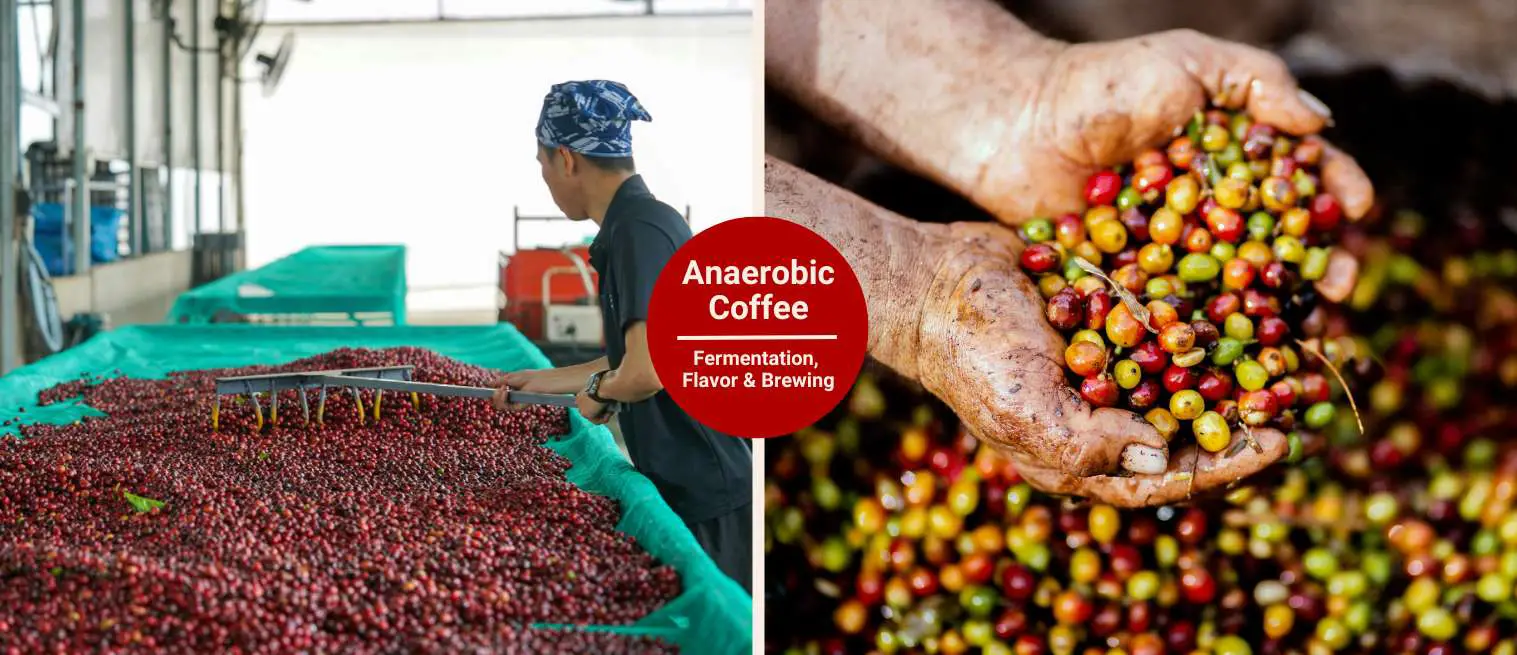What Is Anaerobic Coffee? (Fermentation, Flavor & Brewing)
Anaerobic Coffee surprised the heck out of me the first time I tried it. I was reading a post online about experimental coffee processing methods when someone mentioned a brand called September Coffee Co. and how wild their flavors were.
I was looking for something different, something that didn’t taste like my usual medium roast with nutty notes. So I ordered a bag out of pure curiosity.
One sip in and I thought, “Wait, coffee can taste like that?” Later, I noticed the label said “Anaerobic Washed,” and down the rabbit hole I went.
What I discovered was fascinating. This unique processing method is gaining popularity among specialty roasters because of the bold and unconventional flavors it brings out in the cup.
It involves fermenting coffee cherries in sealed, oxygen-free tanks —a technique that gives producers more control over microbial activity and often leads to wild, complex notes that you won’t find in traditional washed or natural coffees.
In this guide, you’ll learn what anaerobic coffee is, how it’s made, what it tastes like, and how to brew it for the best results. If you’re ready to explore coffee flavors that might blow your mind, let’s dive in.
Key Takeaways:
- Anaerobic coffee is fermented in oxygen-free tanks, which creates unique flavors like tropical fruit, red wine, and even bubblegum—way different from traditional washed or natural coffees.
- It’s more expensive due to the precision and risk involved in the fermentation process, but the result is often a higher-quality, specialty-grade cup.
- Brewing methods matter—pour-over, AeroPress, or cold brew bring out the best in anaerobic coffee, especially when you adjust for longer bloom times and proper grind size.
- It’s not for everyone, but adventurous coffee drinkers who enjoy bold, complex, and sometimes funky flavors will likely love the experience.
What Is Anaerobic Coffee?
This anaerobic has nothing to do with lung-busting cardio and everything to do with how coffee is fermented after it’s picked. In simple terms, anaerobic coffee is processed in a low- or zero-oxygen environment. Usually, in sealed tanks or barrels. This changes everything about how the coffee tastes.
How does it differ from Traditional Washed or Natural Processes?
In the washed process, the coffee cherry gets stripped down almost right away, pulped, washed, and then dried. It’s clean, reliable, and you get crisp and bright flavors.
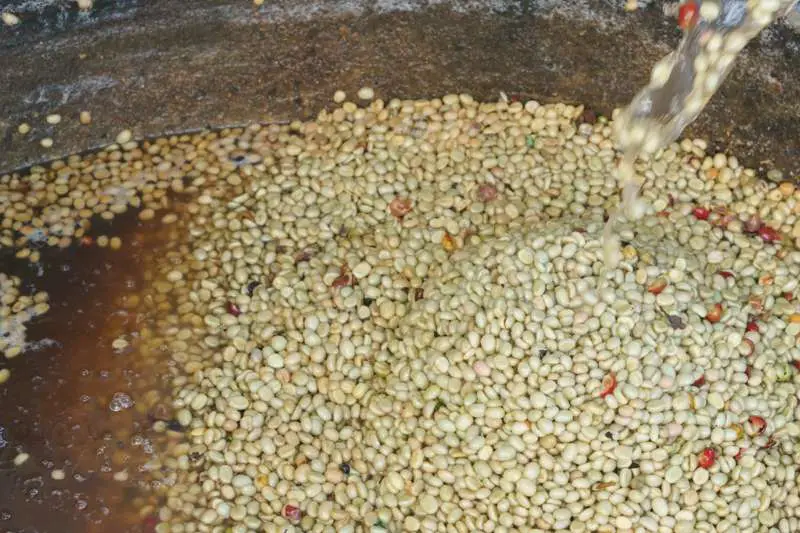
With natural (dry) processing, the whole cherry dries intact, including the fruit, skin, and everything else. This gives you more body and sweetness. However, it can sometimes taste like fermented fruit salad if things go sideways.
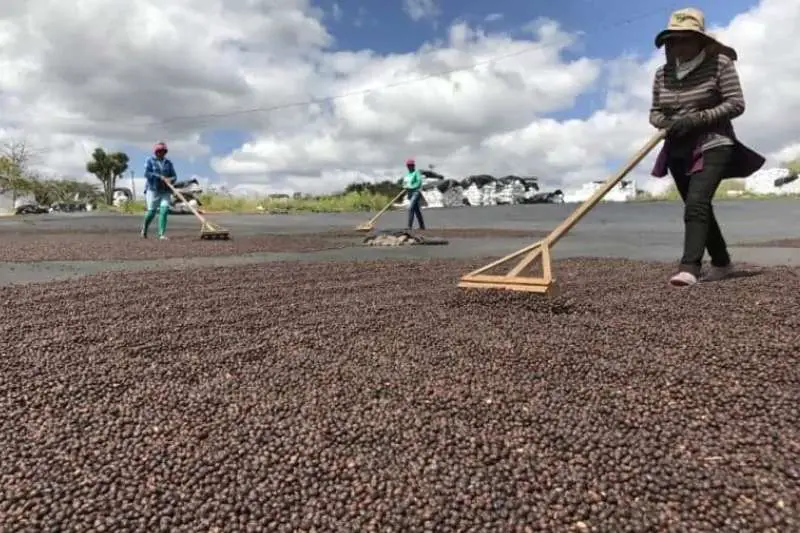
Now with anaerobic processing. Instead of drying or washing the cherries right away, they get sealed up. Typically, in stainless steel or plastic tanks, the pressure builds and no oxygen gets in.
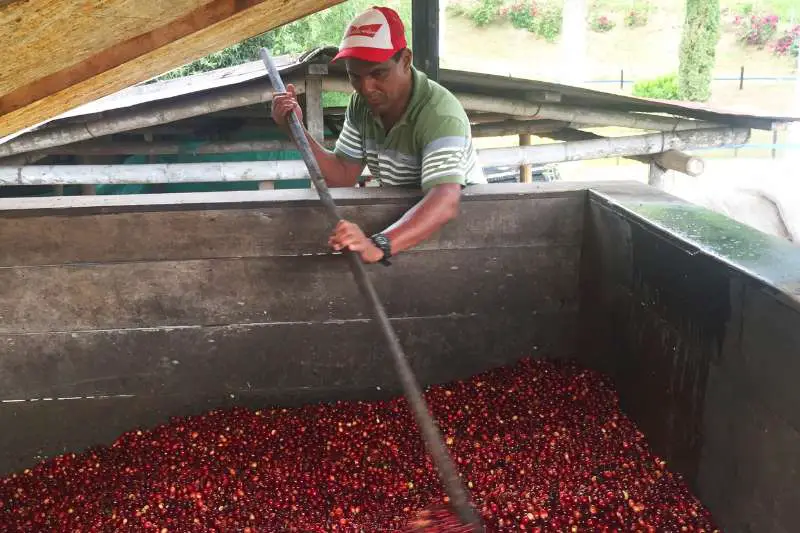
… So what happens?
Lactic acid forms, funky flavors start to develop, and the beans absorb some of that fermented goodness.
Why Fermentation Environment Changes the Final Cup?
Fermentation isn’t new to coffee: washed, natural, and honey processes all rely on it in some form. However, anaerobic fermentation takes it a step further because it gives producers more control.
By removing oxygen, they slow things down and steer the microbial action toward specific outcomes. That’s where the magic happens: lactic acid bacteria thrive, Saccharomyces cerevisiae (same yeast used in wine) goes to work, and you get tasting notes, such as:
Red wine, bubblegum, cinnamon, tropical fruit.
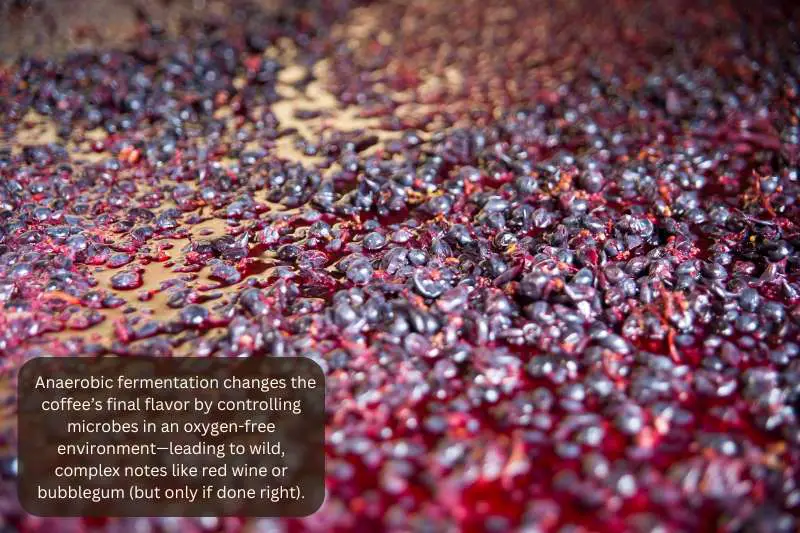
But it’s a double-edged sword. I once had a batch from Colombia that was way too boozy. Like, “I probably shouldn’t drive after this cup” levels. That’s what happens if the process isn’t fine-tuned; there’s too much ethanol and not enough balance.
Notes: always check the label. If it says “anaerobic natural” or “double anaerobic honey,” that’s your clue this cup’s gonna get funky.
How Is Anaerobic Fermentation Done?
Anaerobic fermentation might sound complex, but the core idea is simple: control the environment to control the flavor. So, here’s how it works behind the scenes:
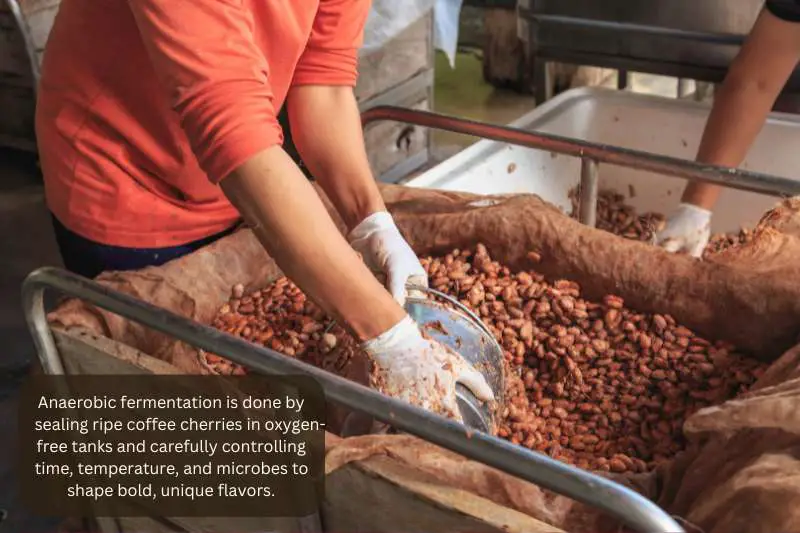
Step 1: Pick Only the Ripe Cherries
It all starts with the cherries. And not just any cherries: we’re talking fully ripe, hand-picked ones that feel almost squishy between your fingers. The reason is that underripe fruit can wreck the whole batch. For this reason, producers get picky here (for good reason).
Step 2: Place Them in Sealed Tanks
Once picked, the cherries go straight into sealed tanks. A lot of farms use stainless steel tanks with one-way valves similar to the process of brewing beer but with fruit. The idea is to remove oxygen, which completely changes the fermentation process.
Step 3: Control the Fermentation Conditions
Now here’s where it gets a bit technical. Inside these tanks, producers control everything: temperature, pressure, and time.
Some even monitor the pH level and sugar content daily. It’s like a high-stakes slow cooker. Some ferment for 12 hours. Others let it sit for up to 7 days. It all depends on the flavor they’re chasing.
Step 4: Add Microbes (Optional but Powerful)
Sometimes, they even add specific yeasts, bacteria, or enzymes to steer the profile, much like winemakers use specific strains to influence the taste.
Oxygen-Free = More Control
So why all this effort to keep oxygen out? Because oxygen lets in the bad guys aka acetobacter. For example, this can make the coffee taste vinegary.
Without oxygen, lactic acid bacteria thrive. These little microbes are the ones giving anaerobic coffee its bright, juicy and sometimes boozy character.
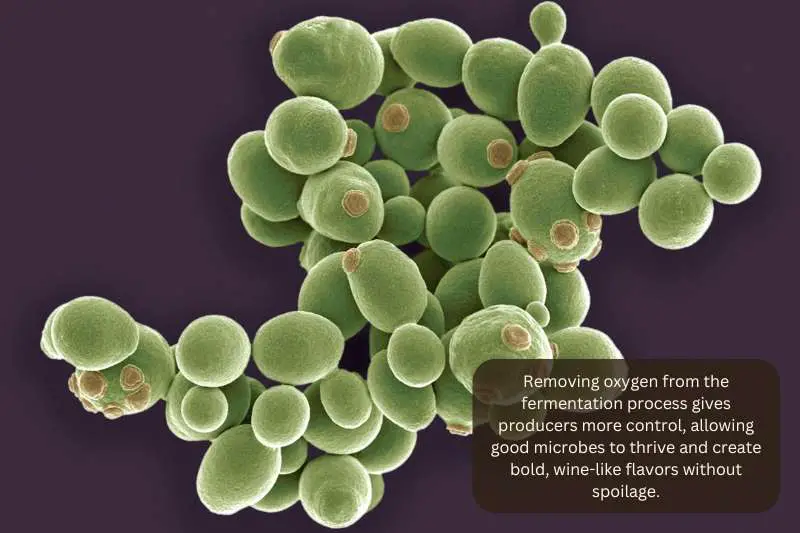
And remember Saccharomyces cerevisiae?
That’s the same yeast in wine and kombucha. This ferments sugars into CO₂ and ethanol, shaping the flavor with every bubble.
The fact is that anaerobic coffee and wine have a lot in common.
Both depend on carefully controlled fermentation to bring out nuanced, layered flavors. It’s all about time, temperature, and letting the right microbes do their thing.
What Does Anaerobic Coffee Taste Like?
We already spoke a bit about tastes, but let’s go more in-depth with this graph. So, here’s a little cheat sheet of what to expect from the flavor and where you might find it:
| Flavor Note | Description | Common Origins | Best Brew Methods |
|---|---|---|---|
| Red Wine | Bold, fermented, slightly acidic | Colombia, Ethiopia | Pour-over, AeroPress |
| Tropical Fruit | Notes of pineapple, mango, or passion fruit | Costa Rica, Panama | Pour-over, Cold Brew |
| Bubblegum | Sweet, slightly artificial fruitiness | Colombia (SL-28, Gesha varieties) | AeroPress, V60 |
| Cinnamon/Spice | Warm spice notes, sometimes like mulled wine | Honduras, Costa Rica | French Press, Cold Brew |
| Strawberry/Jammy | Ripe berry sweetness, slightly syrupy texture | Ethiopia, Colombia | Pour-over, AeroPress |
| Mint/Herbal | Refreshing, clean finish with herbal undertones | Experimental lots (e.g., Wilder Lasso) | V60, Chemex |
| Chocolate/Raisin | Deep sweetness with a bit of tang | Guatemala, Brazil | French Press, Espresso |
| Funky/Fermented | Unusual, complex — can be boozy or tangy | Double Anaerobic or Honey Processed | Pour-over, AeroPress (longer bloom) |
Why It Might Not Be for Everyone (Acidity, Intensity)
Well, not everyone is going to love anaerobic coffee. Some people are used to mellow, chocolatey brews and might find this too out-there. And I get that.

Requires a palate adjusting
One cup I tried reminded me of fizzy sangria with a weird aftertaste. Well, it wasn’t terrible, but it’s not something I’d drink daily.
Acidity is very present
The acidity is often very present, not in a lemon-zing kind of way, but more like red wine that’s been left to breathe. If you’re sensitive to that sharp tang or prefer smoother, nuttier profiles, anaerobic might feel like too much.
Coffee intensity
Also, these coffees are intense. However, that’s what I love about them, but it can be overwhelming if you’re easing into specialty coffee.
Notes: Try it first as a pour-over or AeroPress. Both help soften those punchy notes while still showcasing the funk. I’ll talk more about this later in the guide.
What Anaerobic Coffee Brands Can You Try?
Now, if you decide to experiment with anaerobic coffee, here are a few brands that are awesome. Each one has a unique background, process, and flavor profile that’ll challenge what you thought coffee could taste like.
September Coffee Co. – Wilder Lasso, Colombia SL-28
This one hit me like a citrusy mint bomb in a good way. It’s an anaerobic washed SL-28 from Colombia, grown by Wilder Lasso (a veterinarian-turned-coffee-producer, no joke).
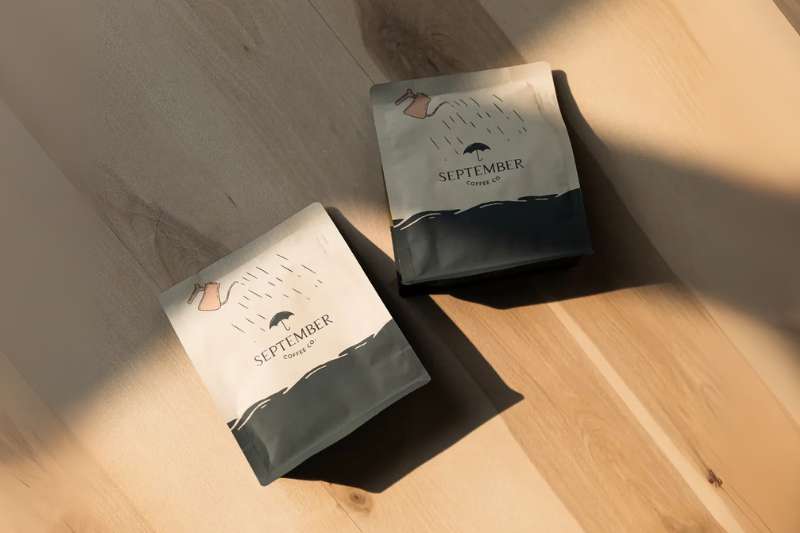
The beans go through a 60-hour fermentation with mint-infused water, which gives the cup this bright red currant pop and a lingering sweet finish.
There’s a sharp citric acidity, medium body, and it feels clean and experimental at the same time.
Brandywine Coffee Roasters – La Palma Y El Tucan Gesha
This one’s more like a special treat than an everyday brew. We’re talking 103 hours of anaerobic fermentation, then 873 hours drying on raised beds.
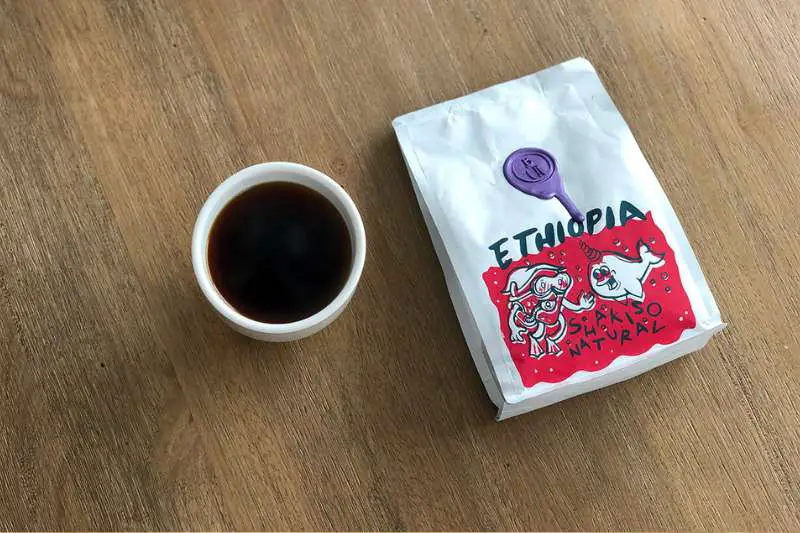
As a result, you get a coffee with notes of strawberry, jasmine, honeydew, and black tea all in one cup. Also, it’s a naturally processed Gesha variety. So expect floral elegance with juicy sweetness.
Costa Rica Anaerobic Tarrazú
The Costa Rica Anaerobic Tarrazú tastes like warm apple pie and cinnamon rolls. You’ll find it great for filter brewing and the French press, and it has a spiced profile that’s still complex without going over the top.
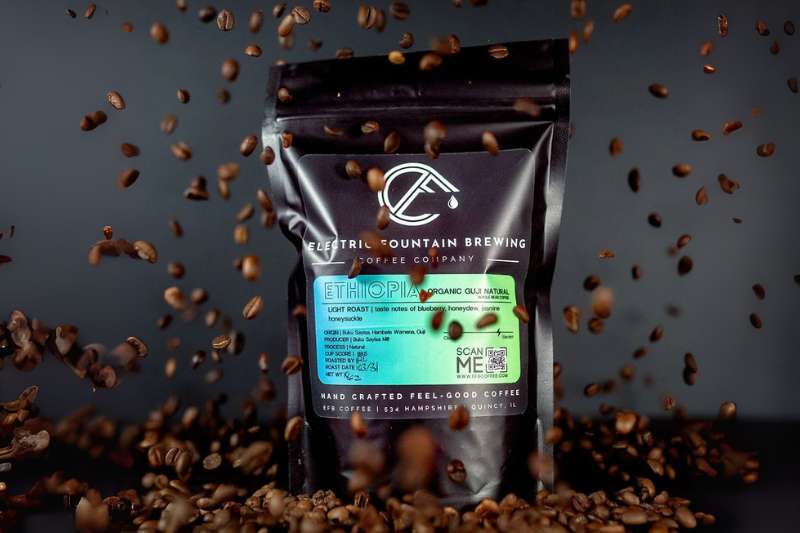
How to Brew Anaerobic Coffee for Best Flavor?
Alright, so you got your hands on some anaerobic coffee. Now let’s talk about how to brew it:
Pour-Over (V60 or Kalita)
This is one of my favorite methods because pour-over gives you precision.

In other words, you can dial in the grind size, water temp, and bloom time to highlight those wild flavor notes. I commonly go with a medium-fine grind, around the texture of table salt, and water off the boil (about 94°C or 201°F).
Next, you let it bloom for 45–50 seconds instead of the usual 30. Why? Because anaerobic coffees tend to off-gas more CO₂ from fermentation. That longer bloom helps the cup open up.
AeroPress
If you like your cup more juicy and full-bodied, AeroPress is a solid move. I suggest using the inverted method with a finer grind similar to caster sugar.

Your water temp should be around 90°C (194°F), which works best here. Once again, extend your bloom to at least 40 seconds. Afterward, steep for 1:30, then press slow. You’ll pull out those berry and wine-like notes while softening any overly tangy edges.
Cold Brew
Cold brew with anaerobic beans? Surprisingly awesome. Use a coarse grind, steep it in the fridge for 16–18 hours. You’ll end up with a clean, mellow drink that still keeps the funky-fruity core.
Extra Tip: Control That Bloom
Whatever method you use, don’t skip the bloom: let the coffee bloom longer than usual.
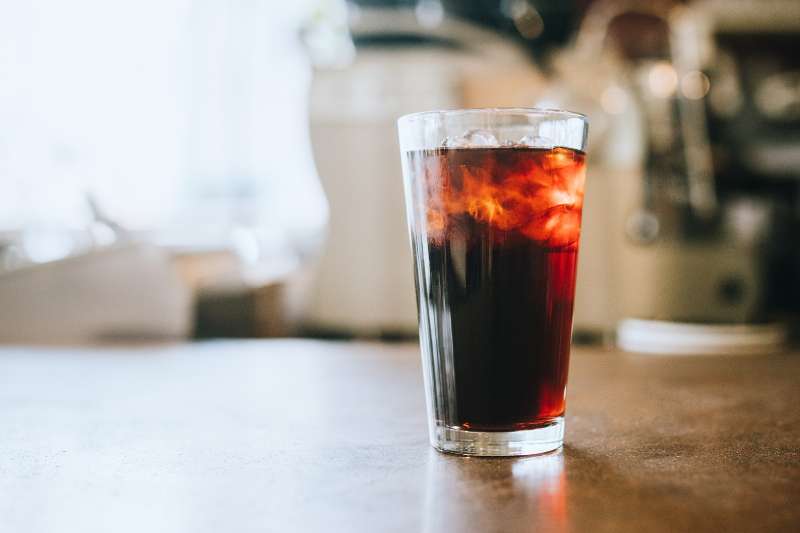
Typically, anaerobic beans release more trapped gas from fermentation. And if you rush the process, you can end up with uneven extraction or muddy flavors.
Last Thoughts
So here’s my final verdict: anaerobic coffee isn’t something I drink every single day but when it’s brewed right? It’s honestly incredible.
The flavors are wild, complex, sometimes funky, sometimes sweet, and it always feels like a bit of an adventure in a cup.
Have you tried anaerobic coffee yet? I’d love to hear your weirdest tasting notes whether it reminded you of bubblegum, balsamic, or blueberry wine, drop them below! And with that said… voilà!
Questions? We Have Answers.
Get answers to a list of the most Frequently Asked Questions.

